How to Make White Dress Shirts Last Longer
Many fashionistas are turning toward a greener, more sustainable wardrobe. As more consumers embrace the slow fashion movement, they seek to minimize their impact on the environment as much as possible.
A key principle of the movement is longer-lasting clothing. Buying clothes less often, and keeping clothes out of landfills are two of the best things you can do for the environment.
This goes beyond environmentalism. Ensuring your clothes stay in tip-top shape makes smart financial sense as well—something we all need in the face of economic uncertainty. By adopting these small changes into your life, you can help make sure your clothes will last as long as possible, and do good for both the environment and your wallet.
Invest in Quality
If you're looking to buy this season's newest clothes, the first thing to consider is quality over quantity. Looking for well-designed, high-quality sustainable fabrics should be the first step when investing in your wardrobe.
Instead of focusing on seasonal trends, buy classic staple pieces that are timeless and easy to dress up or down.
If you're not sure where to start, our clothing guide can help!
Rotate Your Clothes as Much as Possible
Clothes, while fashionable, are designed for specific purposes. Sometimes it's for work, working out, or for casual wear. But, wearing the wrong clothes for the wrong activity may not just be unprofessional, it can make the clothes fall apart quicker.
Wearing your favorite pair of jeans for every activity day after day may feel nice, but it's definitely the quickest way to destroy them. Likewise, wearing your work clothes while making dinner or putting the kids to bed is a good way to ruin them.
Rotating our wardrobes, so all our clothes get some wear time, and choosing appropriate clothes for the right activity are just some of the ways to make sure they stay as good as the day we bought them. And, when it comes to caring for and cleaning them, there are some easy swaps to ensure they stay that way.
Washing
Service Your Washer
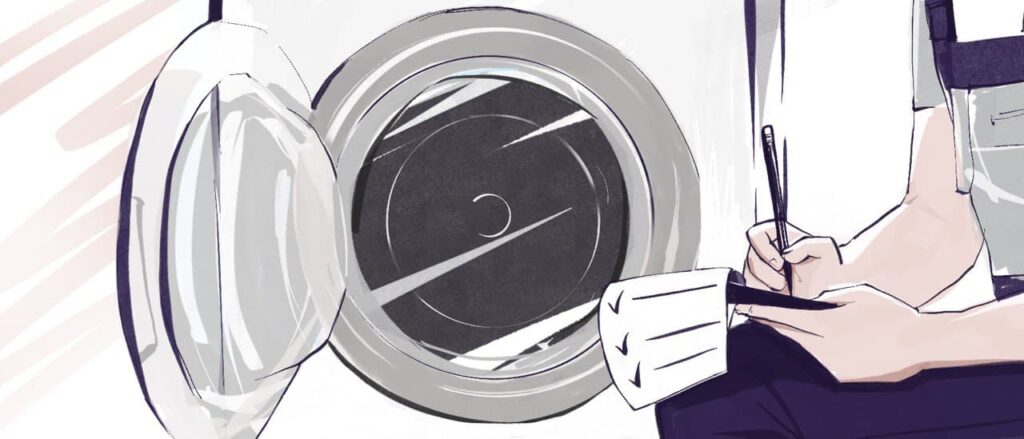
Like most expensive appliances, washing machines work most efficiently when you regularly clean and check them for deficient parts.
Performing a simple check helps prevent garment damage. It also ensures that the machine works properly, uses the correct amount of water and energy, and spins properly.
Don't Overload Your Washer
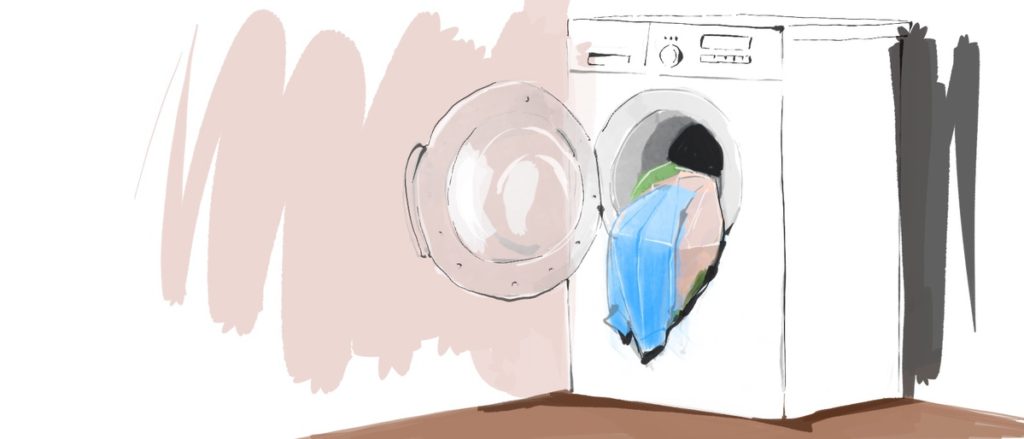
I know this might sound counterintuitive.
If you're trying to save water and energy, loading everything into one load would make sense!
But actually, the washer will have to work harder, the clothes won't be as clean, and you risk damaging the machine.
A damaged machine is neither cheap or environmentally friendly to replace— take that from me.
Use Less Detergent
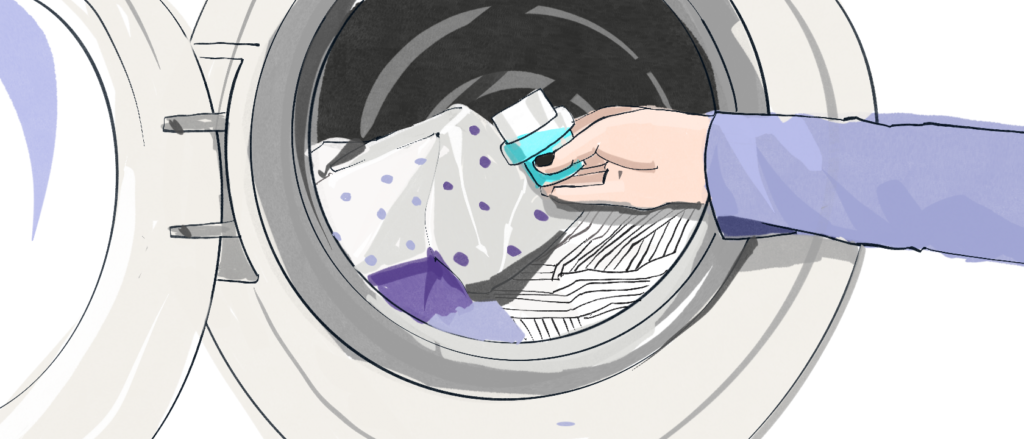
Most of us overuse the stuff.
Again, this can lead to washing machine problems, as it clogs the pipes and overfills with suds.
The detergent can strip away dyes and make fabrics weaker.
So instead, use about half of what you think you need.
You can also supplement in a bit of baking soda to keep colours looking vivid and bright. Plus, it helps keep away lingering odours.
Read the Label!
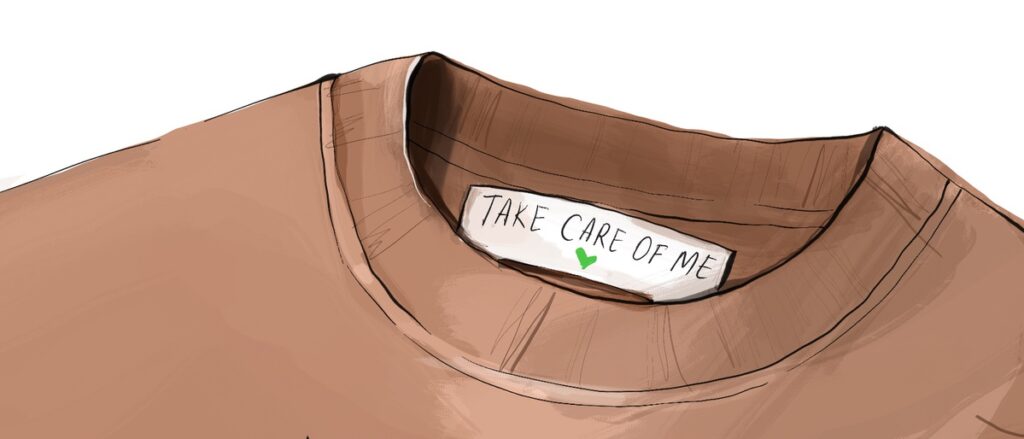
Different fabrics need different care to get them clean.
Some clothes should only be cold-washed with like colours, while some in warm water with a slower spin. And others should only be washed in a delicates bag (seriously, this thing will save all your ahem… lacier pieces).
Lower the Temperature

Even if you're washing in warm or hot water, turning the temperature down—even just a small bit—can help a lot.
The washer uses a lot of energy to heat the water up, so washing in room temp water will make a huge difference.
Don't Wash Clothes as Often
Every time your clothes go through the washer, they get just a bit more worn down. By choosing to wash less, you're helping maintain the fabric and dyes for longer.
I know there are people that will scoff at such a suggestion, but hear me out.
Underwear, socks, and gym clothes should all only be worn for one wear. But most everything else can handle multiple wears, especially outer layers, such as sweatshirts, dress shirts, and most pants.
Unless they've been soiled by a rogue ketchup packet or you had to sit on an un-airconditioned bus for an hour, they probably aren't that dirty. Airing them out on a clothesline, or in front of a fan or AC unit can help keep them smelling fresh, without the damage.
Obviously, make some judgment calls. But, wearing clothes two or three times before you throw them in the hamper saves yourself down the road.
Wash Clothes Inside Out
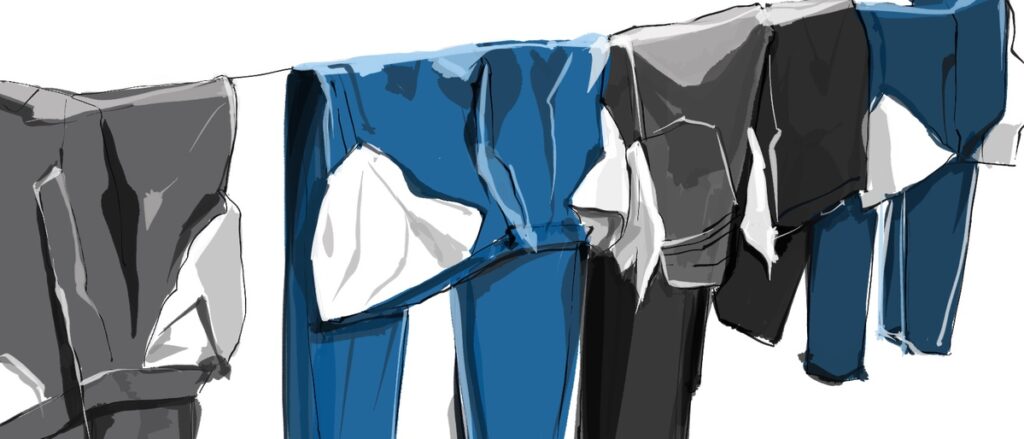
That awesome pair of dark wash jeans won't look so great after a few trips through the washer, and the design on that graphic tee might start to crack. By washing inside out, the inside fabric will be rubbing against the machine and other clothes instead of the dyed or printed side.
Drying
Avoid Dry Cleaning

Dry cleaning uses harsh chemicals to get your clothes clean. The most commonly used is Perchloroethylene, a liquid solvent linked to cancer, kidney disease, and groundwater contamination.
These chemicals are horrible for the environment and the dry clean employees. Plus, they're also horrible for your clothes. The chemicals cause clothes to fade quicker, and possibly even shrink or warp.
To avoid the dry cleaner, buy more versatile fabrics. And for the items you already own that are "dry clean only," hand-washing can often be a good substitute as long as you're careful.
Line Dry
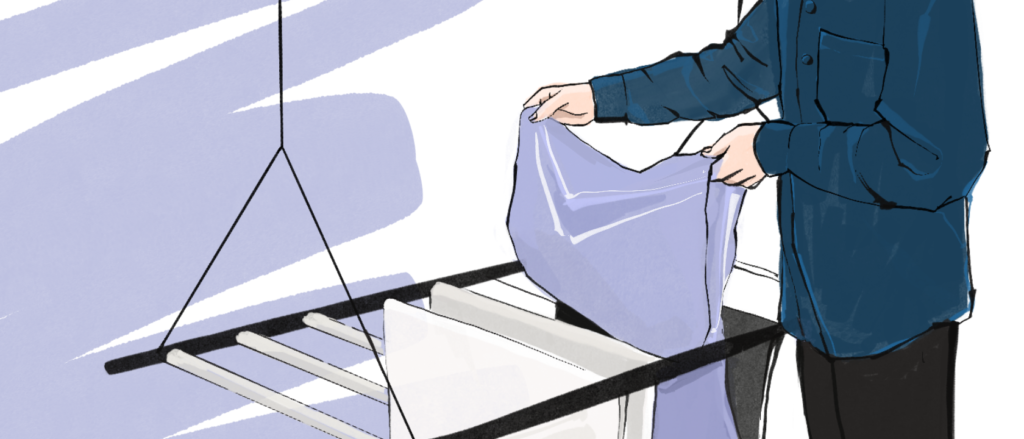
The sun is the original environmental-friendly way to dry your clothes. Line drying will help you save on your electric bill, and keep your clothes in tip-top shape unlike with tumble- and heat-drying, which cause shrinkage, fading, and rips.
If drying outside in the sun isn't an option, buy a clothes rack for inside. Most of them are foldable and easy to store under a bed, so they can even be a great option if you live in a small space.
Storing
Store Clothes in a Cool, Dry Environment
By keeping your off-season clothes in the garage, attic, or basement, you're subjecting them to harsher, varying temperatures and higher levels of humidity and moisture. Instead, find space at the back of your closet or an area inside your house to keep them in the best space. Also, don't store in a place that gets a lot of sun to avoid colours from fading.
Use Old Pillowcases as Garment Bags
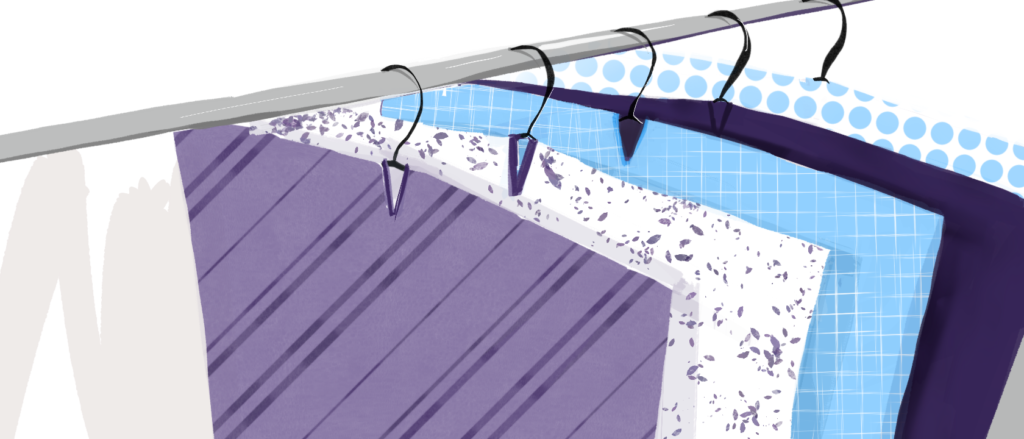
If you have some laying around, this is a great way to upcycle them. By storing clothes in garment bags, you're keeping dust and dirt off of them, and preserving the colour more easily.
Fold Heavy Sweaters and Knits on a Shelf
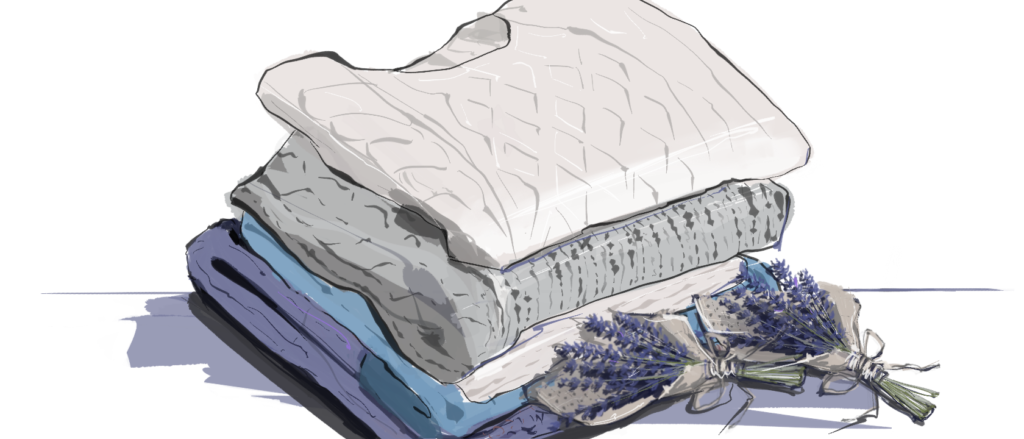
Wool tends to sag, and hanging them may result in droopy, stretched fabric that will be hard to set right.
Also, adding a bit of dried lavender to the piles will keep away moths and the dread holes they cause.
Use Wooden Hangers
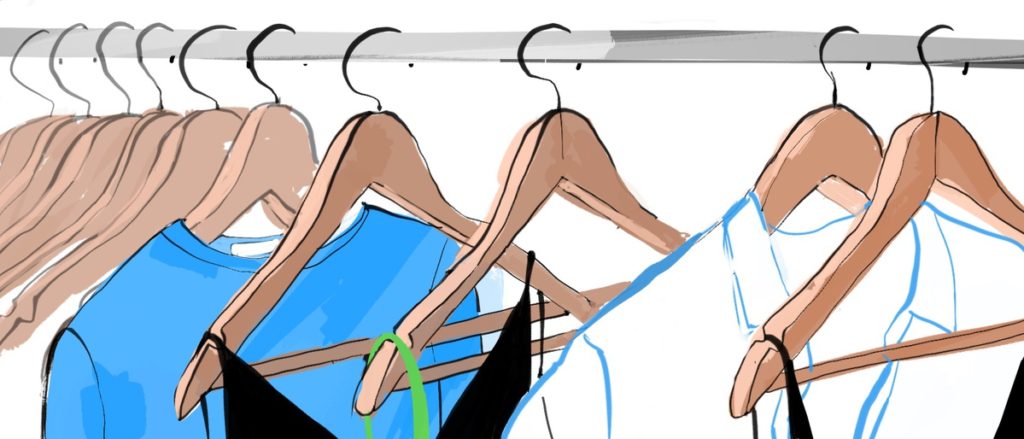
Nice wooden hangers will keep the shape of your clothes better, without any sagging or misshapen shoulders. Wire and plastic hangers might do further damage.
Repairing
Learn to Sew

Learning basic sewing is probably one of the best life skills you can have. Being able to mend a holey sock, replace a lost button, or repair a broken zipper can greatly extend the life of your clothes, and keep them out of a landfill.
A sewing kit is an inexpensive tool that can do wonders for your clothes.
Reusing
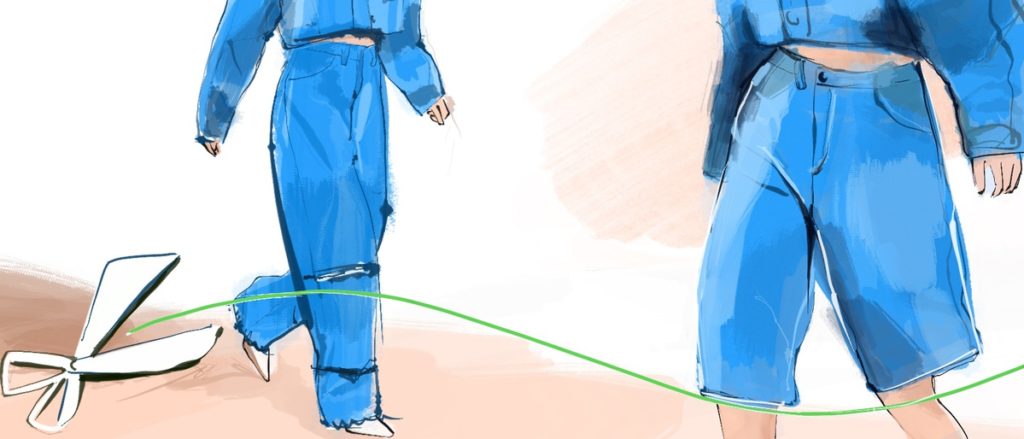
Even with the best of care, clothes will eventually fall apart. If you've exhausted all means to fix it but it's still unwearable, it might be time to find a better use for it.
Instead of just tossing it into the garbage bin, see if there is another way to use it. Socks can become cleaning rags. Old tee shirts can be sewn into a quilt or blanket. Hole-ridden pants can become shorts. There are an abundance of ways to upcycle clothes into something better.
Recycling
If there really is nothing else you can use the clothing for, make sure you dispose of it properly. Recycle clothing to reputable organizations, or even compost some. Whatever you do, try not to throw it into the landfill to rot.
By making some small, simple changes to the way we care for, wash, and store our clothes, we can ensure they last as long as possible. This helps us consume less resources, keep clothing out of landfills prematurely, and saves us some money in the long run.
Your clothes won't last forever with these tips, but you can keep them looking fresh, stylish, and colourful for longer.
Source: https://betterworldapparel.com/learn/how-to-make-clothes-last-longer/
0 Response to "How to Make White Dress Shirts Last Longer"
Publicar un comentario